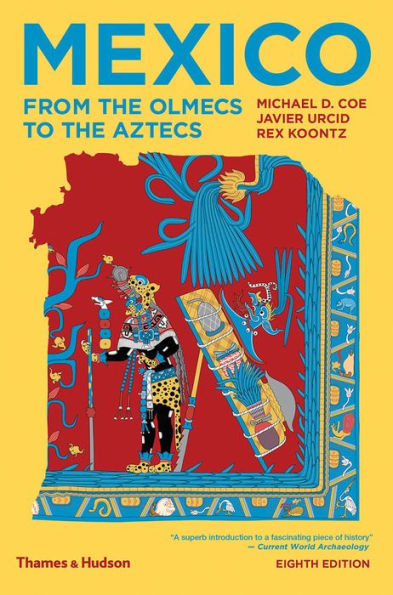Table of Contents
Preface 6
1 Introduction 8
The Geographic Setting 10
Languages and Cultures 14
Periods 15
2 Early Hunters 17
The First Americans 18
Tools of the First Hunters 19
Landscapes of the Early Hunters 21
Hunting in the Basin of Mexico 23
3 The Archaic Period 25
The Desert Culture in North America 26
The Origins of Mexican Cultivated Plants 26
The Importance of Maize 27
Other Cultigens 29
Caves and Rockshelters rusted with of Northeastern Mexico 30
Santa Marta Rockshelter 31
The Tehuacan Valley and Early Domestication 32
Other Archaic Sites 35
The Origins of Settled Life 36
4 The Formative Period: Early Villagers 37
The Early Formative in Chiapas 39
Early Formative Villages in Oaxaca 40
The Site of Tlatilco 41
Established Villages of the Middle Formative 46
Late Formative Cultures of the Central Highlands 48
The Mezcala Puzzle 51
The Shaft-Tomb Art of Western Mexico and the Teuchitlan Tradition 52
5 The Formative Period: Early Civilizations 57
Defining a Civilization 57
The Olmecs 58
The San Lorenzo Olmecs 65
El Manati 73
The Middle Formative Olmecs of La Venta 74
Chiapa de Corzo: a La Venta Outlier? 80
Tres Zapotes and the Long Count Calendar 80
The Olmecs beyond the Heartland 83
Early Zapotecs 89
Building L-Sub at Monte Albán 90
Building J at Monte Albán 93
Later Life of San José Mogote 95
The Rio Verde Drainage in Coastal Oaxaca 96
Izapa 99
La Mojarra and the Isthmian Script 101
6 The Classic Period 102
The Great Urban Centers 102
Teotihuacan 104
The Great Acropolis of Cholula 126
Cerro de las Mesas and Classic Veracruz 129
Classic Monte Albán 132
The Classic Downfall 140
7 The Epiclassic Period 141
The Maya Connection: Cacaxtla and Xochicalco 141
The Mixteca Baja and the Ñuiñe Script 151
Tula Chico 154
Cantona 154
El Tajin 156
Central Veracruz 161
Central Oaxaca 164
The Pacific Littoral of Guerrero and Oaxaca 168
Guanajuato and Northwestern Mexico 170
The End of the Epiclassic 173
8 The Post-Classic Period: The Toltec State 174
A Time of Troubles 174
The Chichimeca of Northern Mexico 176
Tula and the Toltecs 177
The Toltec Annals 177
Archaeological Tula 180
Tula and Chich'en Itza 189
9 The Post-Classic Period: Rival States 192
Late Zapotec Culture at Mitla 192
The Royal Houses of the Mixteca 194
The Huastec 200
The Tarascan Kingdom 204
Casas Grandes and the Northern Trade Route 207
10 The Aztecs 208
The Rise of the Aztec State 208
The Consolidation of Aztec Power 211
The Island City 213
Aztec Society 217
The Long-Distance Merchants 219
Becoming an Aztec 220
Marriage 222
The Triple Alliance and the Empire 223
The Emperor and the Palace 224
Food and Agriculture 226
War and Human Sacrifice 227
Aztec Religion 231
Aztec Art and Architecture 238
Aztec Thought and Literature 248
Epilogue 251
The Spanish Conquest 251
New Spain and the Colonial World 255
The "Ladinoization" of Mexico 257
Aftermath 258
The Principal Domestic Plants of Pre-Spanish Mesoamerica 259
Chronological Table 260
Reigning Monarchs of the Aztec State 261
Text References 261
Further Reading 261
Sources of Illustrations 267
Index 268



